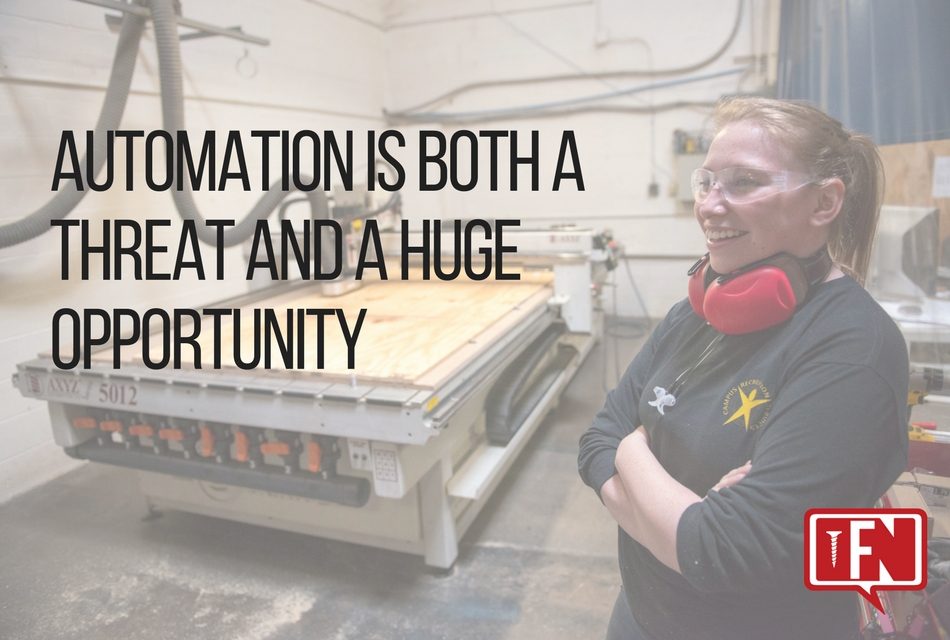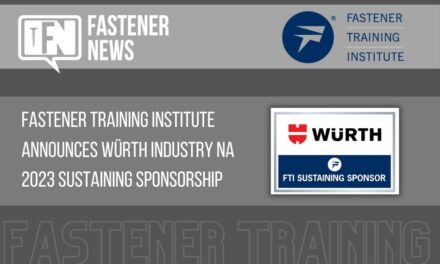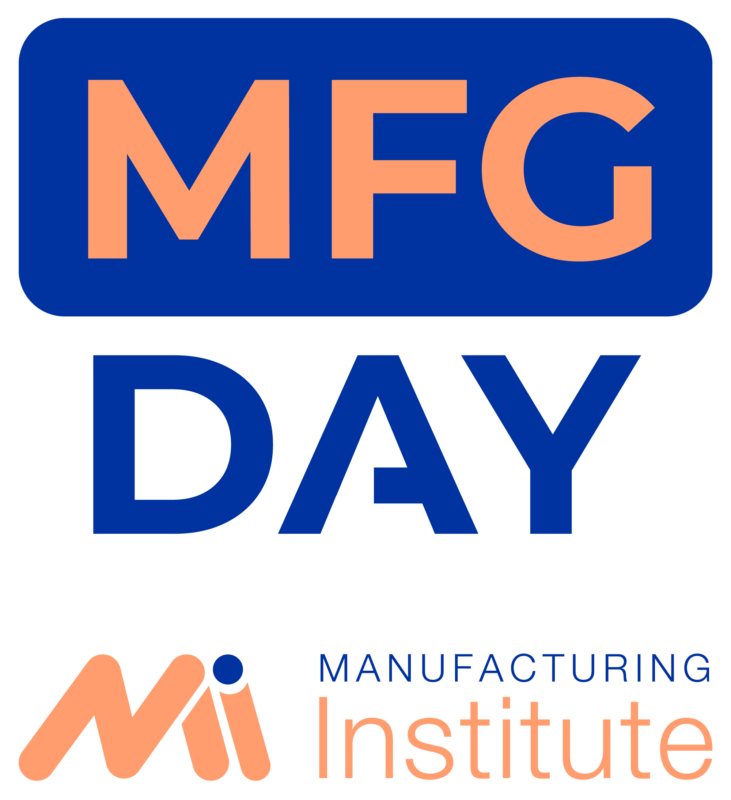What’s that hiding under your bed and in your closet? It’s the monster known as automation and it’s taking away jobs. Or, if you take time to look, you’ll see there’s nothing to fear. Although change can be scary, it is necessary and unavoidable. Embracing this shift can benefit your company as it has many others. Automation will leave have an undeniable impact on existing practices, but it will also create jobs.
Maxi Cifarelli, 25, of Baltimore, peers through safety goggles at a flat screen, her left knee bent and heel resting on her chair. She is en employee of Marlin Steel. Not long before this very moment, she graduated with a fine arts degree, specializing in interdisciplinary object design. Now she spends her days working with a computer numerical control, or CNC, router. She hasn’t named it yet. It’s a new partner and the potential enemy. It has been said that automation is poised to sweep through the economy and many fear it will take over jobs.
Yet, Cifarelli’s story is unique. She befriended this CNC machine and she has a job because of it.
“I need the robot to ensure consistency,” Cifarelli said. “Over the past year, I’ve become really accustomed to the sounds and the movements of it. I can really predict what’s gonna happen. We’re kind of a team.”
Weighing the options
Automation has allowed Marlin Steel to thrive, but across the country, workers feel threatened. They have little to worry about with currently demonstrated technologies. The industry can breathe a sigh of relief as McKinsey discovered that a slim number of occupations—less than 5 percent—could be lost to full-time automation. If workers embrace robotics, artificial intelligence and automation, companies of all sizes can advance. Either way, the movement to incorporate robotics is poised to accelerate, if not here, then in foreign countries.
While the United States contemplates adopting robots, other countries are not so hesitant. China has jumped on the automation train and is expected to double its installation of industrial robots from 75,000 in 2015 to 150,000 in 2018, nearly four times the rate of North America, according to the International Federation of Robotics.
A double-edged sword
Many Americans don’t think they need to adapt, with 80% saying their job definitely or probably will exist in its current form in 50 years. Yet there is still a possibility that most occupations could succumb to partial automation for at least a chunk of their responsibilities. If companies do welcome automation, half of all the paid activities people do in the world’s workforce could be automated. Automation is currently assumed to target work that involves physical labor and repetition, but it’s not just low-skill, low-wage work that could be automated. Occupations that are even high-paying, high-level jobs could also face some degree of automation.
Automation is a double-edged sword. Family-owned Ramsey, Minn.-based injection molder Dynamic Group recently boosted its production by 400% after installing robotic arms. However, it expects to reduce its reliance on temporary workers. Automation of activities can enable businesses to improve performance by reducing errors and improving quality and speed. Automation in some cases can even bypass the productivity of the human workforce.
Education gives a boost
To compete with these machines, the workforce has to be upskilled. This new level of training is a huge issue due to the educational systems. Education has not kept pace with the changing nature of work, resulting in many employers saying they cannot find enough workers with the skills they need. 40 percent of employers said lack of skills was the main reason for entry-level job vacancies. 60 percent said that new graduates were not adequately prepared for the world of work. While a lot of these gaps are in STEM knowledge, they’re also in team work, punctuality, and communication.
Chuck Speelman, superintendent of the Tri-Rivers Career Center, realized that after a series of conversations with local manufacturers, its robotics program was not teaching marketable skills or using up-to-date equipment. What was being taught was not working and the teachings had to be updated. By partnering with manufacturers, Tri-Rivers Career Center designed a system that is now being replicated throughout the state.
Adoption will be slow, and this isn’t the first time change has come this way
Business processes will be transformed and ultimately workers will have to change and adapt. The shift will not happen overnight. Think back to the long-term technology-enabled shifts of the workforce in agriculture in developed countries during the 20th century. Mass unemployment did not occur because new types of work was created elsewhere. Currently, one third of U.S. new jobs did not exist 25 years ago and came about due to the internet and technology. These occupations include IT development, hardware manufacturing, app creation, and IT systems management.
A 2011 study found that the Internet had destroyed 500,000 jobs in France in the previous 15 years. At the same time, the Internet had brought about 1.2 million other jobs, a net addition of 700,000. That’s 2.4 jobs created for every job lost.
Mapping out the future
What will happen for sure is uncertain, but what can be said is that the best hope for the workforce and staying competitive is the cooperation of humans and machines. Education and business must work more closely to ensure that students are prepared for the workforce with marketable skills that are up to date. The concerns regarding adoption are understandable and yet the potential for benefit is so great. In the United States, digitization in just online talent platforms, big data analytics, and the Internet of Things could add up to $2.2 trillion to annual GDP by 2025.
Change can be scary, but the world has experienced it before and pulled through. Rather than sitting back and resisting or denying the change, embrace it, like Maxi Cifarelli and her CNC partner.
Canadian former professional ice hockey player and former head coach Wayne Gretzky once said, “You miss 100% of the shots you don’t take.” If you don’t at least try, your business could fall behind. Working slowly and taking that first step is the most difficult aspect of the journey, but its rewards will be worth it.
Sources:
The Fastener Museum, Workforce / Skills Gap
















